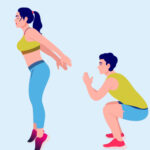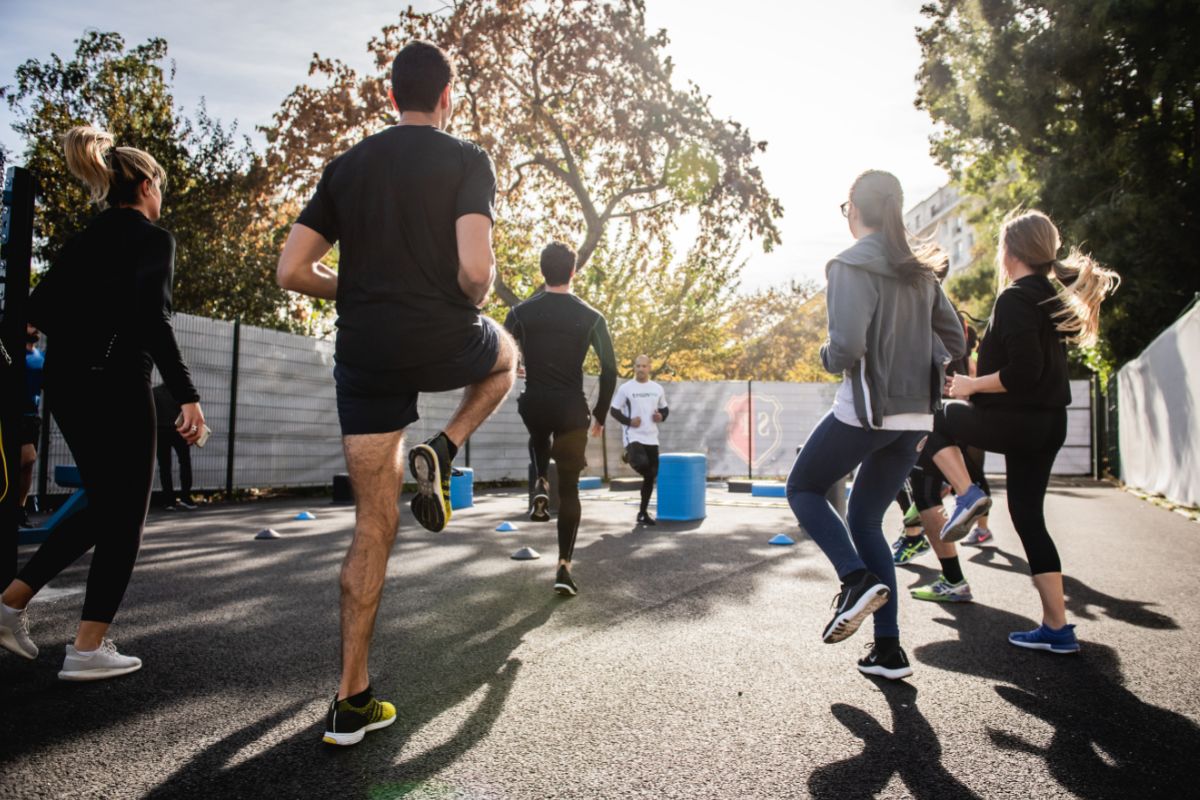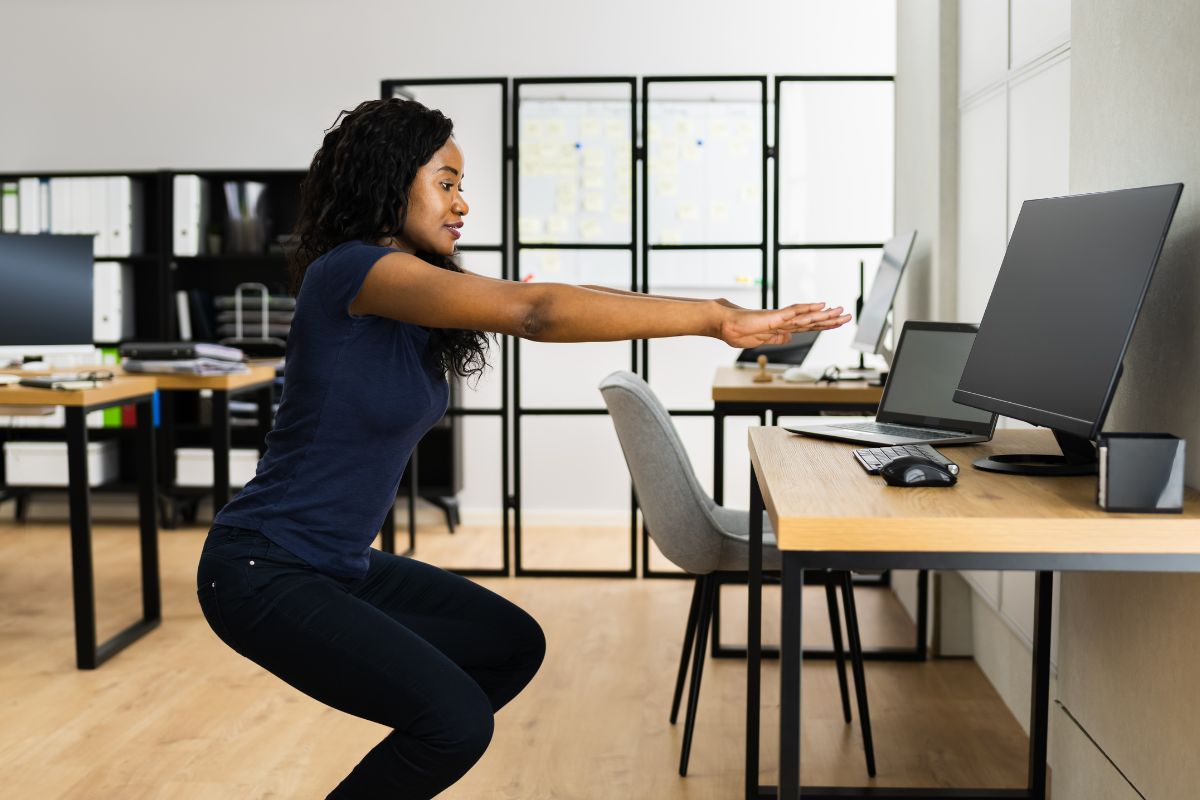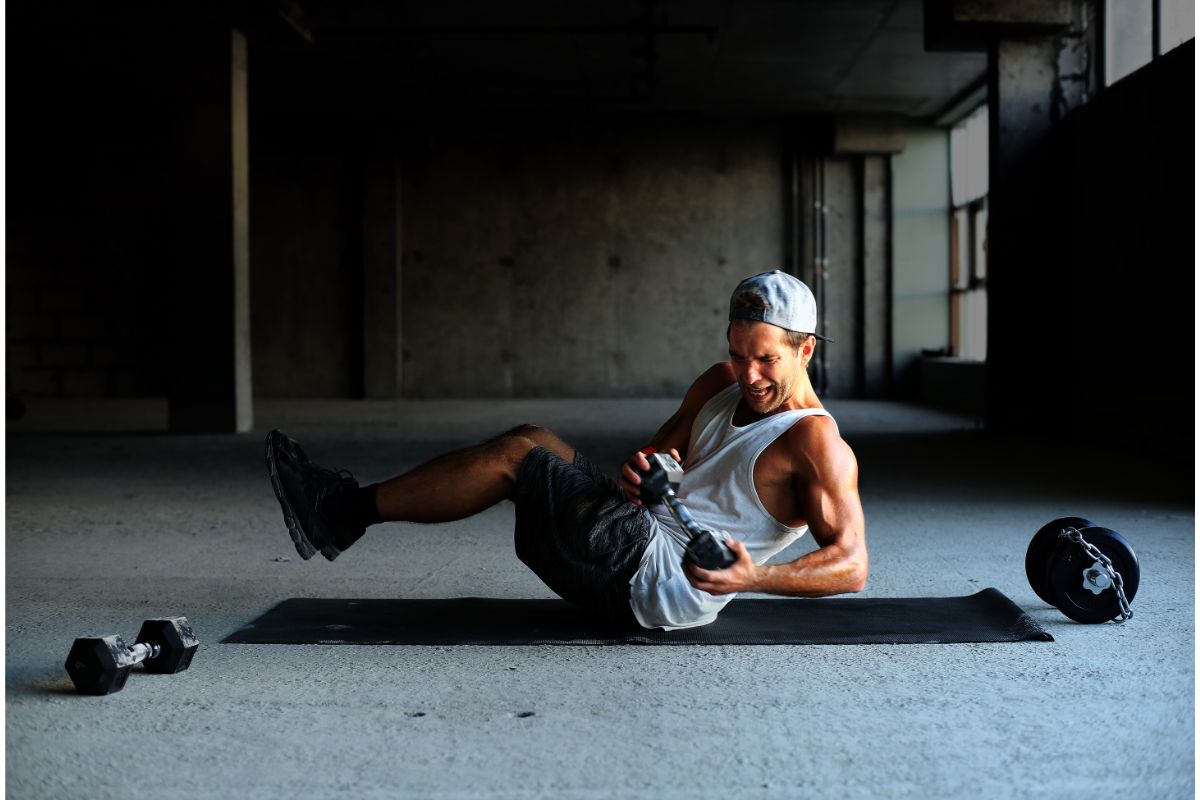Making time to exercise is often difficult, but home workouts may be the solution to this problem.
At-home exercises can be performed in many ways, from gathering several items of basic training equipment or putting up a full gym in a spare room in the house to working out with nothing but resistance bands or even your body’s weight.
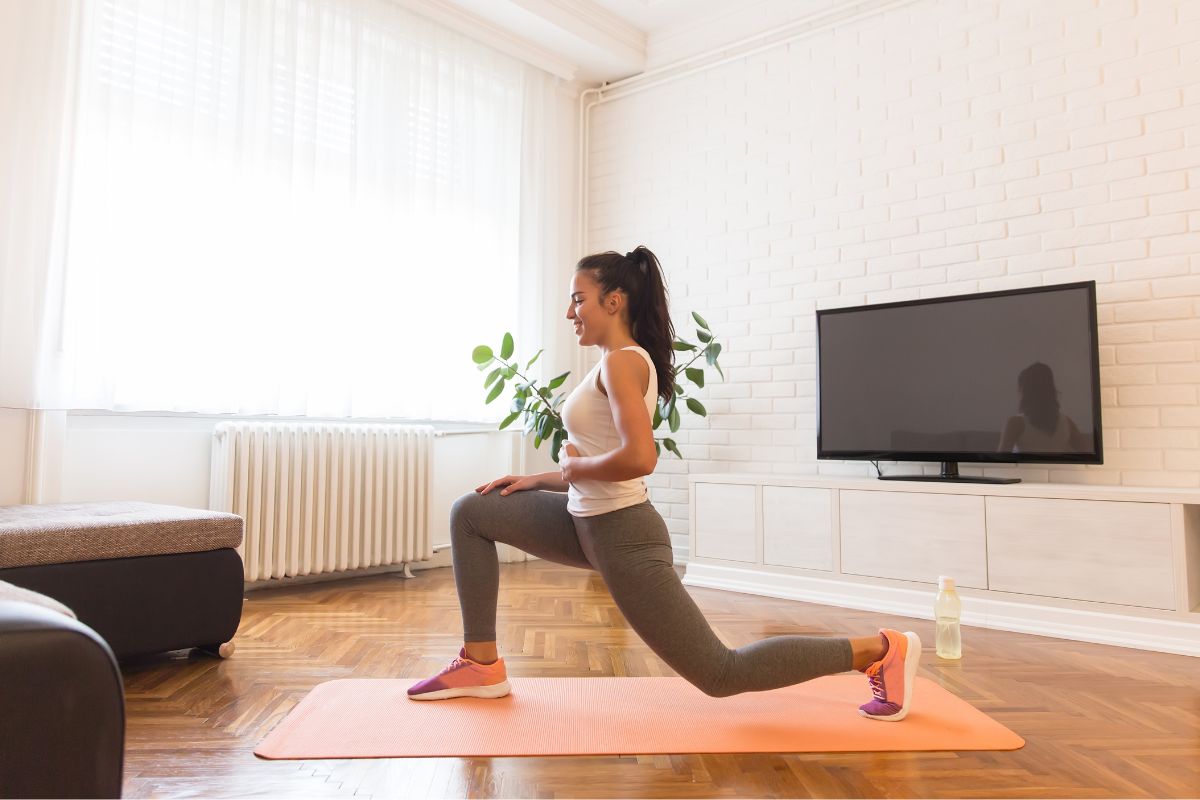

But can you achieve the same quality and standards of exercising at home as you could at the gym? The answer is yes, but with a few limitations.
Training at home has numerous advantages over gym exercise, but it might also be more appealing to work out at a specialized facility to ensure you have the proper, and oftentimes more advanced, equipment based on your particular needs.
If you want to learn if completing circuit training, HIIT, and plyometrics at home can be effective and help you keep your fitness levels optimal, then keep on reading to find out!
Can I Work Out At Home?
The short answer to this is yes, you can definitely work out at home to get effective and productive results.
There are several workouts and methods to help you exercise at home, ranging from installing exercise apps like Fitbod and FitOn to attending live-streamed Pilates classes and using some dumbbells or resistance bands you have at home.
Are At-Home Workouts As Effective As Those At The Gym?
Certainly, fitness centers nowadays have an abundance of equipment that is there for you to work out intensely and effectively, so working out at the gym will always have that advantage over working out at home.
If you tell an avid gym-goer to work out at home, they will most probably be begging to go to the gym by the end of the week thinking that all their efforts have gone to waste now that they can’t do some of the ‘normal’ exercises they gravitate to in their local gym.
Certainly, reducing the weight you lift or changing the intensity in which you approach your exercises can impact your long-term fitness journey, but that will only happen if you exercise the wrong way.
Similar to checking your phone at the gym and not engaging your muscles and mind in the exercises you perform, if working out at home means lazily doing some lunges while watching TV, then it will definitely not be an effective workout.
So, if you are determined to engage in intense activity and be 100% dedicated to yourself and your workout, then at-home workouts can be extremely effective and equally rewarding as those you can do at the gym.
However, when asked whether a home workout is as ‘successful’ as the workouts are done at the gym, it is important to first clarify what ‘effective’ means and how that applies to every person’s goals.
What Constitutes An Effective Workout And Workout Plan?
A good fitness training week must include resistance training 2 or 3 times per week and aerobic training 2 days per week, with one of the days being a low and the other one a high-intensity training day.
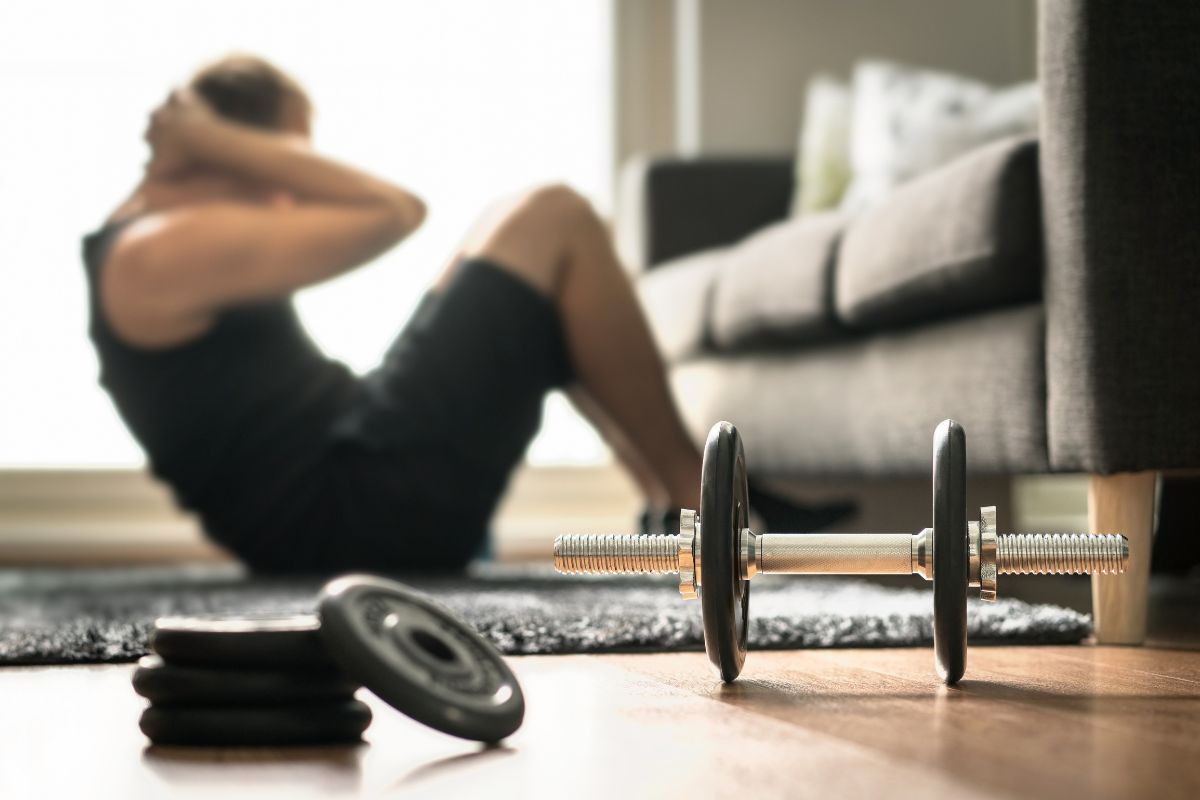

Taking this into account, it then depends on the individual’s long or short-term goals to figure out what’s the best fitness program for them.
Do you want to build muscle, lose weight, work on your agility and speed, increase your mobility, or simply feel good and use those post-workout endorphins to keep you going throughout the day?
If, for example, you want to work on your cardiovascular endurance, you simply have to move your body to increase your heart rate, whether that’s done by walking or pacing around the house, climbing stairs, or by doing cardio HIIT workouts.
On the other hand, if you are aiming to build muscle or do a body recomposition (that is build muscle and lose weight at the same time), then some cardiovascular activity is still necessary, but focusing on resistance training is the best way to achieve that.
Can I Effectively Build Muscle Or Perform Resistance Training At Home?
While doable, trying to replicate strength training outside the gym needs to be our main focus and yet it is frequently the thing we tend to ignore when working out at home.
Strength or resistance training benefits us in all aspects of life, be it our daily mood, hormonal balance, bone strength, body strength, and mobility, as well as overall health and posture.
As you can tell, it is indeed crucial to incorporate resistance training into our exercise regimens.
The best way to do so is by staying consistent and following the recommended program that includes 2 to 3 resistance training sessions per week at a minimum – and more if possible.
Resistance training at home can be done with the use of dumbbells, free weights, or any other equipment you have at home.
Even if you do not own any equipment, resistance bands and bodyweight exercises can be more than enough to help you strength train and build muscle.
One thing to keep in mind is that if you cannot progressively overload by adding more weight – in the case that you are, for example, only doing bodyweight exercises – you have to be more creative.
Adding some extra reps or sets is one way to go, but you can also change your tempo (i.e. go down slower on push-ups or hold that squat a bit longer before you go up again) or work on your unilateral movements (e.g. single-arm push-ups or one-leg squats).
What Are The Best Type Of Workouts To Do At Home?
Again, this depends on your goals and what you are looking to achieve in the long run.
Cardio HIIT workouts, such as Zumba live-streamed classes, or simply doing jumping jacks are great ways to work on your cardiovascular condition.
On the other hand, plyometrics, calisthenics, LIIT (low-impact interval training), and barre can help you build some muscle, and the use of bands or weights, no matter how light or heavy, can further assist with your progress.
What To Be Aware Of When Working Out At Home?
While you can use it to your advantage for exercises like sliding hamstring curls, be careful not to slip if you are exercising on a slippery floor and are wearing socks or even going barefoot.
If you are doing HIIT exercises that demand a fast pace and short bursts of activity, it is best to have your shoes on to make sure you will be stable throughout the workout and not suffer ankle sprains or worse lower body injuries.
You should be equally careful when picking up and using extra weights that are not intended for resistance training.
For instance, you might want to use a table or a bag full of books as a weight for your weighted glute bridges. In this example, make sure that you carefully place that weight on you so as not to hurt yourself during the exercise.
Finally, balance is extremely important when working out at home, so while squats and lunges might be performed in the same way as they would in the gym, pull-ups will have to be adjusted and carefully performed.
The Bottom Line
Calisthenics, plyometrics, HIIT workouts, Pilates or yoga classes…any type of workout you choose to do at home can be an effective one to keep your body and soul healthy and fit.
Nevertheless, the results you will yield in the long run, such as muscle gain, body shaping, weight loss, endurance, and many others, all depend on your focus, engagement, and effort put into your workouts.
- How To Start HIIT Workouts [Beginner’s Guide] - May 18, 2023
- How To Sneak A Workout In While Taking Care Of Your Baby - March 17, 2023
- How To Build Your Chest With Dumbbells [Guide] - February 9, 2023

